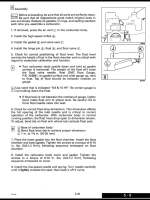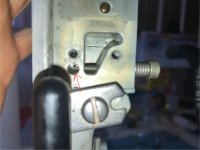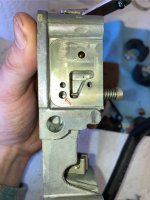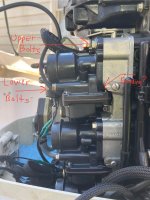Bought the service manual (the seloc manual also has some info the service manual doesn’t) looks like it is a fuel screw so unscrewing richens the mixture and screwing in leans it out.
I’m rebuilding the carbs currently and the manual gives a spec for the carb I’m unfamiliar with. It says carb float drop should be between 17mm-23mm. I get that it’s measuring with the carb right side up and the float drooping but what are the reference points? Do you measure with the bowl gasket on and from that surface to the point in the picture below?
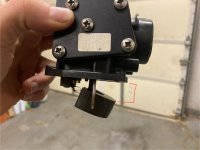
I’m pretty sure you measure from the bowl gasket surface but do you measure with or without the actual gasket installed? Like in this next photo below. The gasket is about 1.5mm thick. Also is that the right point on the float to measure to?
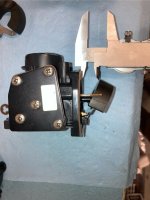
Not sure if it really matters all that much as the float needle wants to bind in its seat before the float is at full droop so maybe it’s not really that necessary. I have to pull the float down to get the float to actually show its full droop. Maybe with some oil lubricating the surfaces though it wouldn’t bind as everything is dry as a bone right now.
I’m rebuilding the carbs currently and the manual gives a spec for the carb I’m unfamiliar with. It says carb float drop should be between 17mm-23mm. I get that it’s measuring with the carb right side up and the float drooping but what are the reference points? Do you measure with the bowl gasket on and from that surface to the point in the picture below?

I’m pretty sure you measure from the bowl gasket surface but do you measure with or without the actual gasket installed? Like in this next photo below. The gasket is about 1.5mm thick. Also is that the right point on the float to measure to?

Not sure if it really matters all that much as the float needle wants to bind in its seat before the float is at full droop so maybe it’s not really that necessary. I have to pull the float down to get the float to actually show its full droop. Maybe with some oil lubricating the surfaces though it wouldn’t bind as everything is dry as a bone right now.


